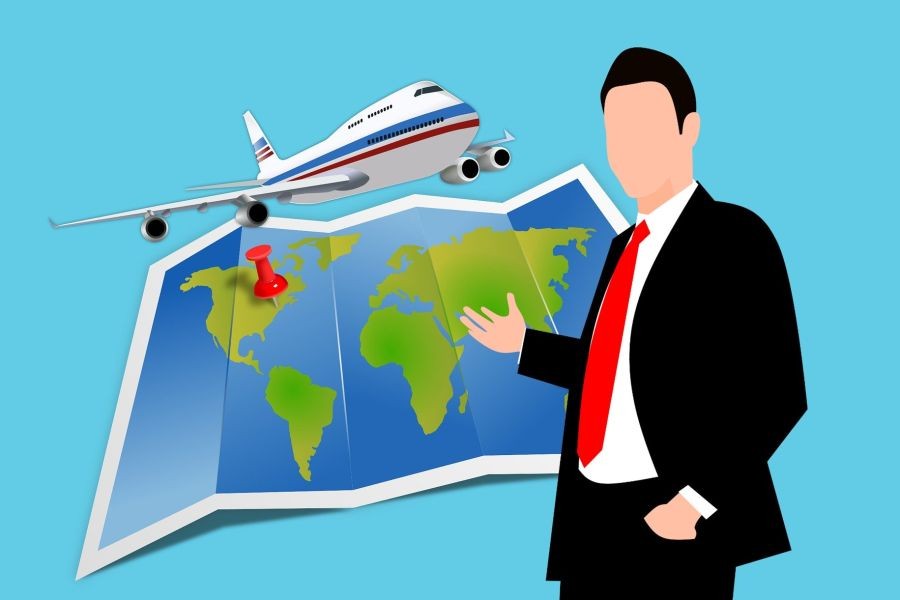In recent years, the rise of remote work has opened up a world of possibilities for professionals seeking flexibility in their living arrangements. For Australians, Southeast Asia (SE Asia) presents an enticing option, with its lower cost of living and vibrant cultures. But is living in SE Asia truly more cost-effective than remaining in Australia? This article delves into the financial, environmental, and lifestyle considerations that remote workers face when choosing between these two regions, providing a comprehensive analysis backed by data and expert insights.
The Cost of Living: A Comparative Analysis
The cost of living is a significant factor for remote workers when deciding where to base themselves. According to the Australian Bureau of Statistics (ABS), the cost of living in Australia has been steadily increasing, with housing, utilities, and food expenses contributing significantly to household budgets. In comparison, countries like Thailand, Vietnam, and Indonesia offer a much lower cost of living, which includes affordable housing, inexpensive food, and lower transportation costs.
For instance, the average monthly rent for a one-bedroom apartment in central Sydney is approximately AUD 2,500, whereas in Bangkok, it can be as low as AUD 800. Additionally, day-to-day expenses such as dining out are significantly cheaper in SE Asia, with a meal at a mid-range restaurant costing around AUD 20 in Australia compared to AUD 10 in Thailand.
Case Study: Australian Expat in Bali
Consider the case of Sarah, an Australian digital marketer who relocated to Bali. She found her living expenses reduced by more than 50% compared to Sydney. The lower cost of living allowed her to invest more in her business, ultimately increasing her revenue by 30% within a year. Sarah's experience highlights the financial advantages of living in SE Asia for remote workers, especially entrepreneurs.
Quality of Life and Work-Life Balance
While the cost of living is a crucial factor, quality of life and work-life balance are equally important. Australia is known for its high living standards, excellent healthcare, and robust infrastructure. The Australian healthcare system, for instance, is consistently ranked among the best in the world, providing a safety net for residents.
In contrast, SE Asia offers a different lifestyle, characterized by a slower pace and a strong sense of community. While healthcare systems may not match Australia's standards, private healthcare options are available and affordable for expatriates. Moreover, the rich cultural experiences and diverse environments in SE Asia can enhance personal well-being and work-life balance.
Environmental Considerations
Remote workers must also consider the environmental impact of their lifestyle choices. Australia's commitment to sustainability is evident in its policies promoting renewable energy and reducing carbon emissions. According to the CSIRO, by 2030, 50% of Australia's energy will be sourced from renewables.
SE Asia, on the other hand, is still developing its sustainability strategies. While countries like Singapore are making strides in green initiatives, others have a long way to go. Remote workers who prioritize sustainability may find Australia more aligned with their values.
Regulatory Insights and Financial Implications
Working remotely from SE Asia entails navigating different regulatory landscapes. For Australians, understanding the tax implications is essential. The Australian Taxation Office (ATO) provides guidelines on how income earned overseas is taxed, which can affect the overall financial advantages of living abroad.
Additionally, the Australian Prudential Regulation Authority (APRA) ensures that Australian expatriates have access to financial services and protections, even while living overseas. Remote workers must consider these regulations to avoid potential financial pitfalls.
Pros and Cons: Living in Australia vs. SE Asia
Pros of Living in Australia:
- High Quality of Life: Access to world-class healthcare and education.
- Environmental Sustainability: Strong commitment to renewable energy and carbon reduction.
- Stable Economy: Resilient economic conditions supported by a robust financial system.
Cons of Living in Australia:
- High Cost of Living: Expensive housing and daily expenses.
- Limited Cultural Diversity: Compared to the rich cultural experiences in SE Asia.
- Environmental Challenges: Vulnerability to climate change impacts, such as bushfires and droughts.
Pros of Living in SE Asia:
- Lower Living Costs: Affordable housing and daily expenses.
- Rich Cultural Experiences: Diverse cultures and vibrant communities.
- Entrepreneurial Opportunities: Growing markets and business potential.
Cons of Living in SE Asia:
- Variable Healthcare Quality: Public healthcare may not meet Australian standards.
- Regulatory Complexities: Different tax and legal systems.
- Environmental Concerns: Developing sustainability initiatives.
Common Myths and Mistakes
Myth: "Moving to SE Asia means sacrificing quality healthcare." Reality: While public healthcare may vary, private healthcare facilities in SE Asia can match international standards and are often more affordable than in Australia.
Myth: "All SE Asian countries are the same in terms of cost of living." Reality: Costs can vary significantly between countries. Singapore, for instance, is more expensive than Vietnam or Thailand.
Myth: "Working remotely from abroad means avoiding Australian taxes." Reality: The ATO has specific rules on foreign income, and failing to comply could lead to penalties.
Future Trends and Predictions
As remote work becomes more prevalent, we can expect an increase in the number of Australians considering SE Asia as a viable option. According to a report by Deloitte, remote work is projected to grow by 30% over the next five years, with digital nomadism becoming a mainstream choice for professionals.
Furthermore, as SE Asian countries continue to invest in infrastructure and sustainability, the region will likely become even more attractive to Australian remote workers seeking a balanced, cost-effective lifestyle.
Conclusion
Choosing between Australia and SE Asia as a base for remote work involves weighing various factors, including cost, quality of life, and environmental impact. While SE Asia offers significant financial advantages and unique cultural experiences, Australia provides stability, high living standards, and a commitment to sustainability. Ultimately, the decision depends on individual priorities and circumstances.
What’s Next? Remote workers should conduct thorough research and consult with financial advisors to make informed decisions. For those interested in exploring SE Asia, consider starting with short-term stays to experience the lifestyle firsthand.
People Also Ask (FAQ)
How does living in SE Asia impact remote workers from Australia? Living in SE Asia can significantly reduce living expenses for Australians, allowing them to allocate more resources to personal and professional development.
What are the biggest misconceptions about living in SE Asia? A common myth is that SE Asia offers uniformly low living costs. In reality, expenses can vary greatly between countries and cities.
What are the best strategies for remote workers in SE Asia? Experts recommend familiarizing yourself with local regulations, maintaining a digital presence, and leveraging local networks for business opportunities.
Related Search Queries
- Cost of living comparison Australia vs. SE Asia
- Remote work tax implications Australia
- Quality of life in SE Asia for expats
- Healthcare standards in SE Asia compared to Australia
- Environmental impact of living abroad
- Cost-effective countries for remote work
- Australian expatriates in SE Asia
- Financial benefits of living in SE Asia
- Remote work lifestyle in SE Asia
- Challenges of living in SE Asia as an Australian































Rosie24L79
8 months ago